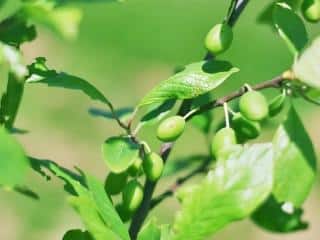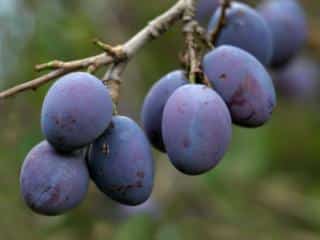

Damson is a delicious type of plum native to Great Britain and Europe.
Damson plum tree facts
Name – Prunus domestica subsp. insititia
Family – Rosaceae
Type – fruit tree
Height – 16→20 feet (5→6 m)
Exposure – full sun
Soil – at least a bit rich
Foliage: deciduous – Flowering: early spring – Harvest: early summer → early fall
Most varieties of damson originated in the British isles, but a few are native to central Europe. Planting and care will ensure a tasty harvest!

Best locations are those with lots of sunlight. Note that your tree will grow a bit large, even with pruning, so give it space.
Plum, like its cousin the cherry tree, doesn’t like pruning: wounds take a long time to heal and new growth is more brittle at the joint than a natural-grown branch.
Nonetheless, you’ll have to prune regularly to control growth and promote fruit formation.
In the first year, you’ll have to shape the tree. This is called “directional pruning”. Instead of letting the tree shoot straight up in the sky, you want to train it into a bowl or cup shape.
In the following years, try to keep these structural branches intact, pruning secondary branches back to them at the end of the season.
Indeed, damson plum trees should be pruned at the end of summer or early fall (after the harvest).
On top of fruit rot mentioned above, you’ll likely have to battle rust, aphids or scale, and scab.

This makes it hardy enough to grow in most of Britain and temperate Europe. A further variety is the quetsche (or Alsace damson), which grows in Easter France and Germany.
In the United States, this matches hardiness zones 7-8 and warmer.
Damson plums are ancient varieties, often savored raw and also cooked into delicious jams, pies, and many recipes.